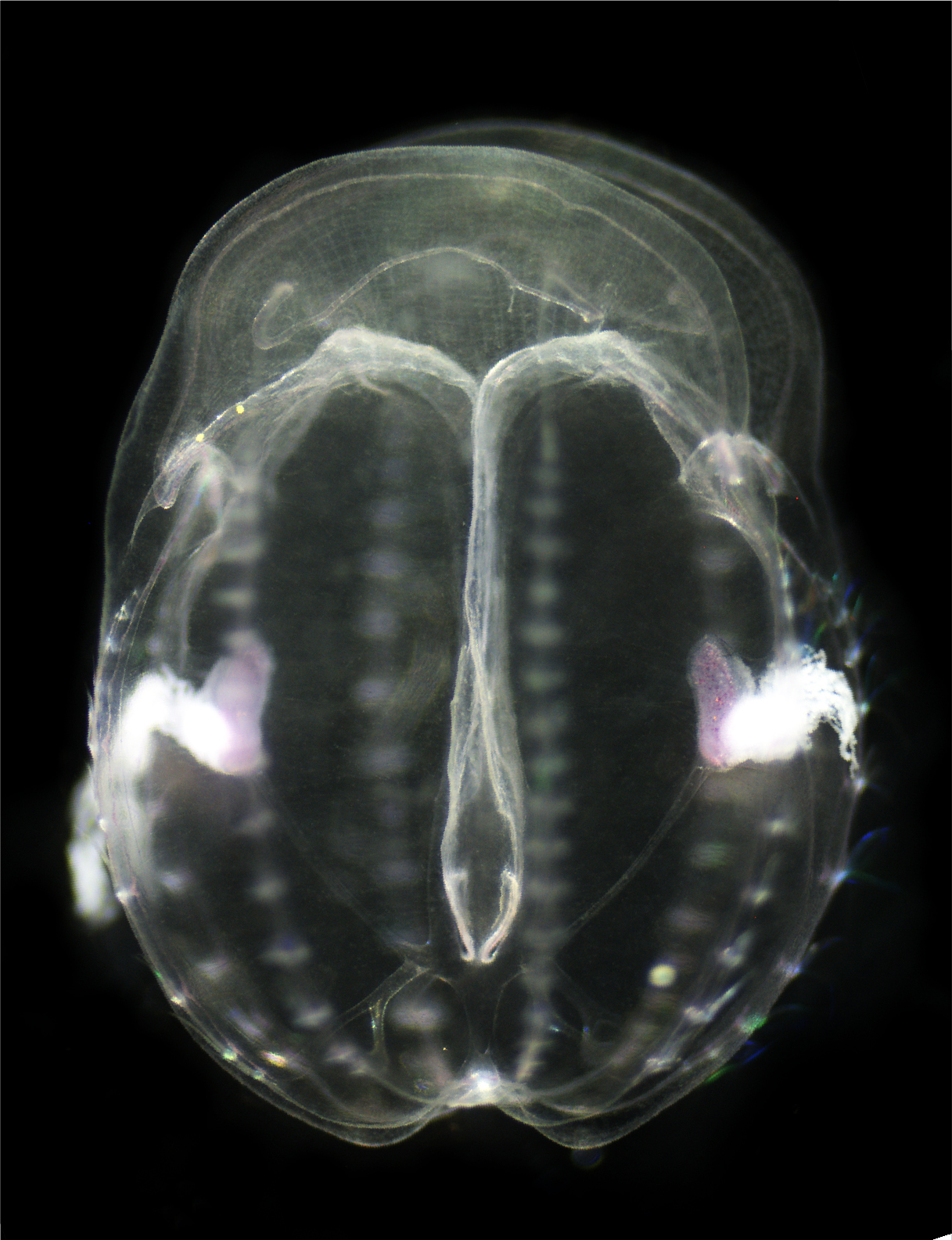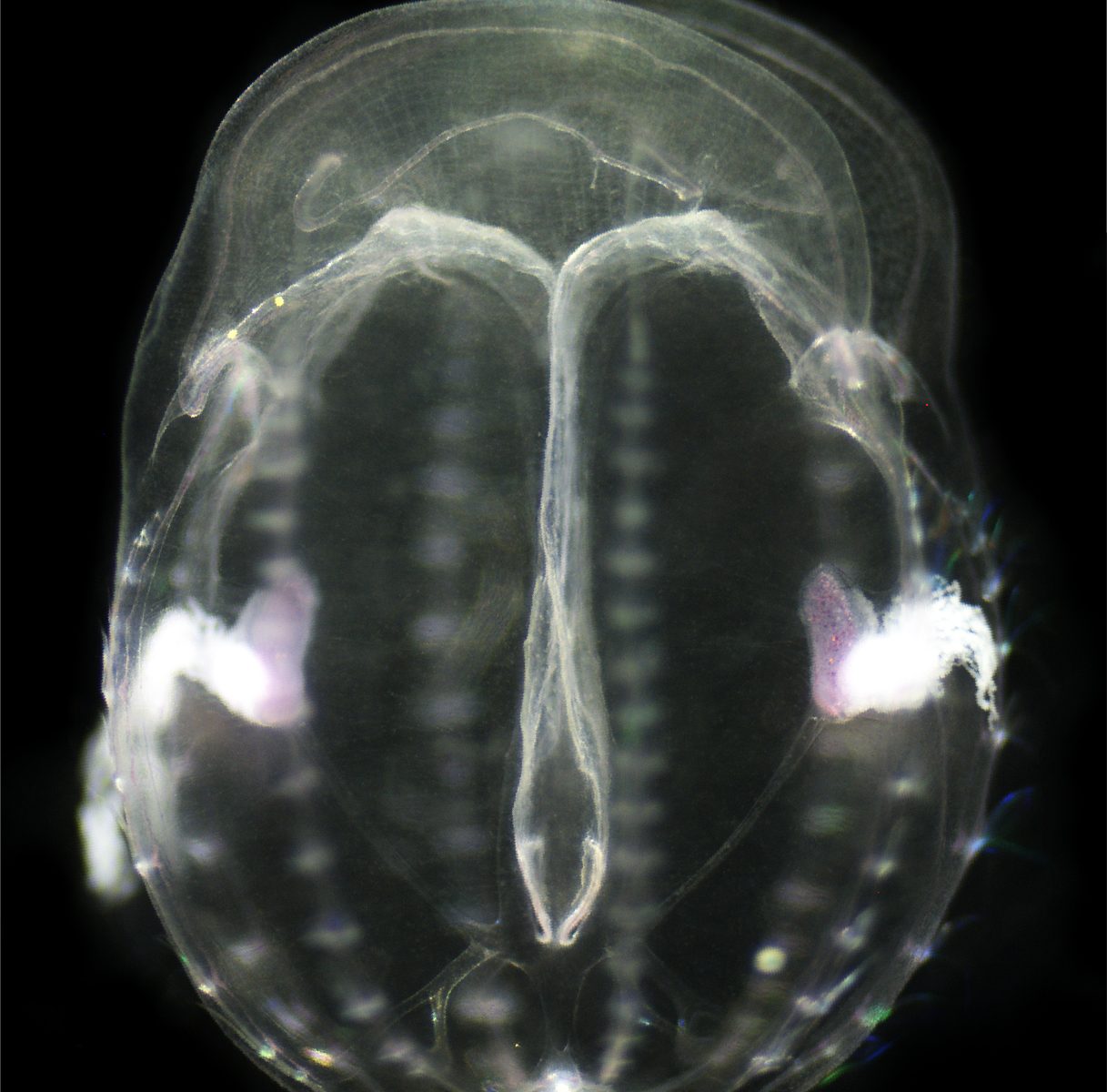
Drs. Allison Edgar, José Miguel Ponciano, and Mark Martindale published a paper in the Proceedings in the National Academy of Sciences (PNAS) – “Ctenophores are direct developers that reproduce continuously beginning very early after hatching.”
A substantial body of literature reports that ctenophores exhibit an apparently unique life history characterized by biphasic sexual reproduction, the first phase of which is called larval reproduction or dissogeny. Whether this strategy is plastically deployed or a typical part of these species’ life history was unknown. In contrast to previous reports, we show that the ctenophore Mnemiopsis leidyi does not have separate phases of early and adult reproduction, regardless of the morphological transition to what has been considered the adult form. Rather, these ctenophores begin to reproduce at a small body size and spawn continuously from this point onward under adequate environmental conditions. They do not display a gap in productivity for metamorphosis or other physiological transition at a certain body size. Furthermore, nutritional and environmental constraints on fecundity are similar in both small and large animals.
Our results provide critical parameters for understanding resource partitioning between growth and reproduction in this taxon, with implications for management of this species in its invaded range. Finally, we report an observation of similarly small-size spawning in a beroid ctenophore, which is morphologically, ecologically, and phylogenetically distinct from other ctenophores reported to spawn at small sizes. We conclude that spawning at small body size should be considered as the default, on-time developmental trajectory rather than as precocious, stress-induced, or otherwise unusual for ctenophores. The ancestral ctenophore was likely a direct developer, consistent with the hypothesis that multiphasic life cycles were introduced after the divergence of the ctenophore lineage.
May 2022
Link to the full paper:
https://www.pnas.org/eprint/6QCGXX83FTNAKPNHTAGS/full
